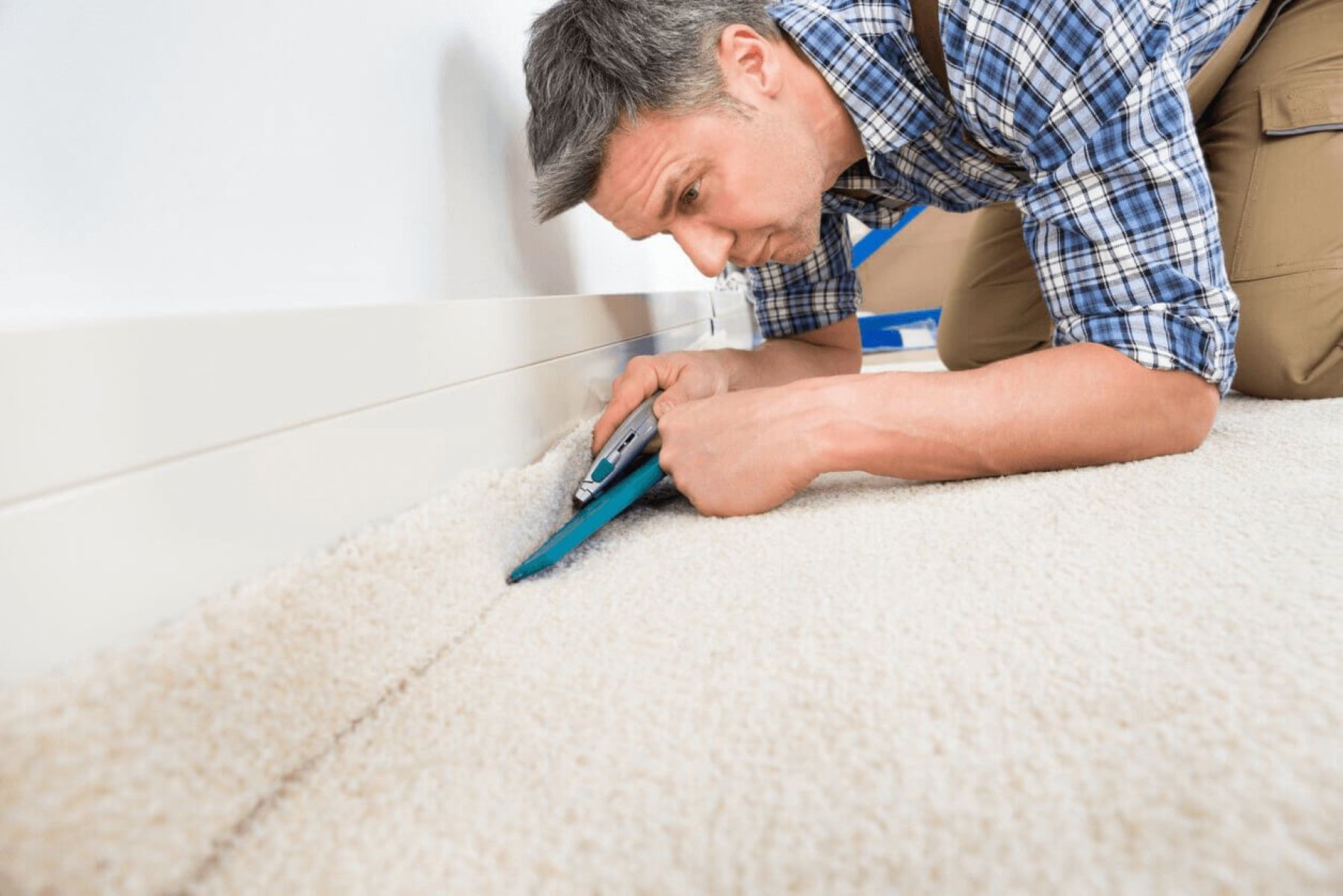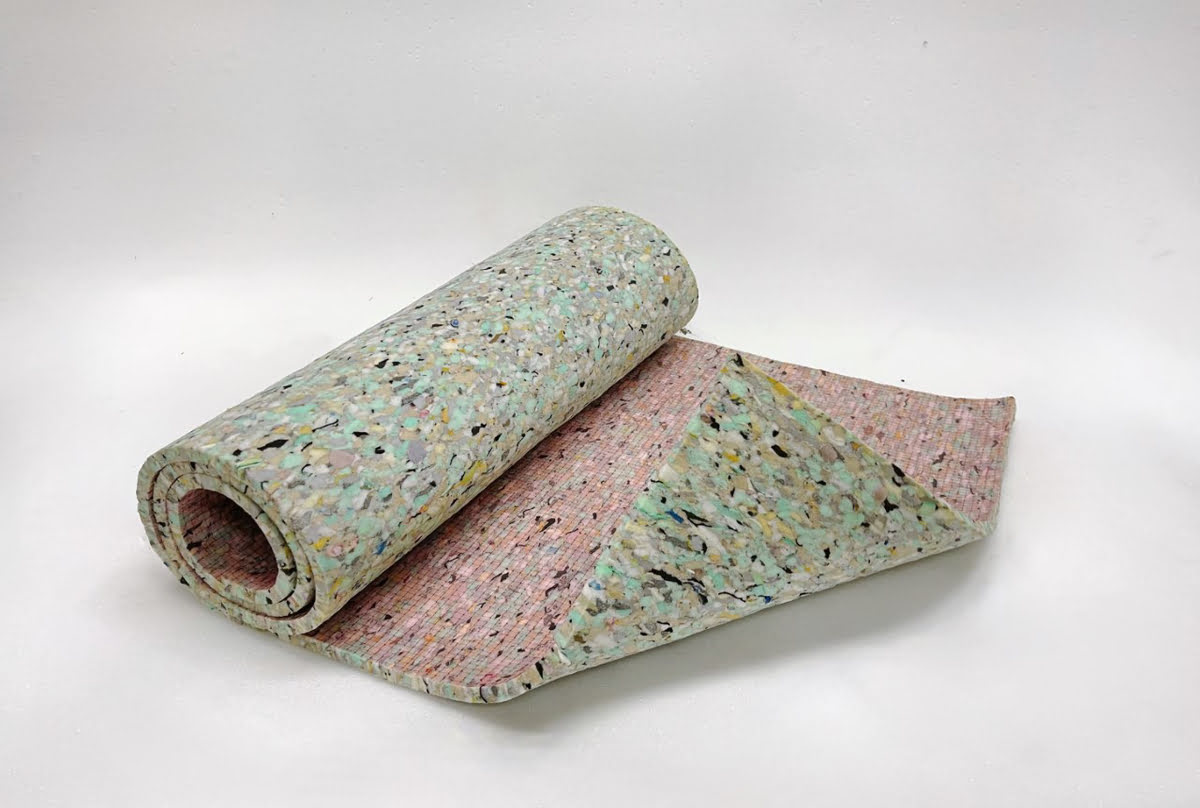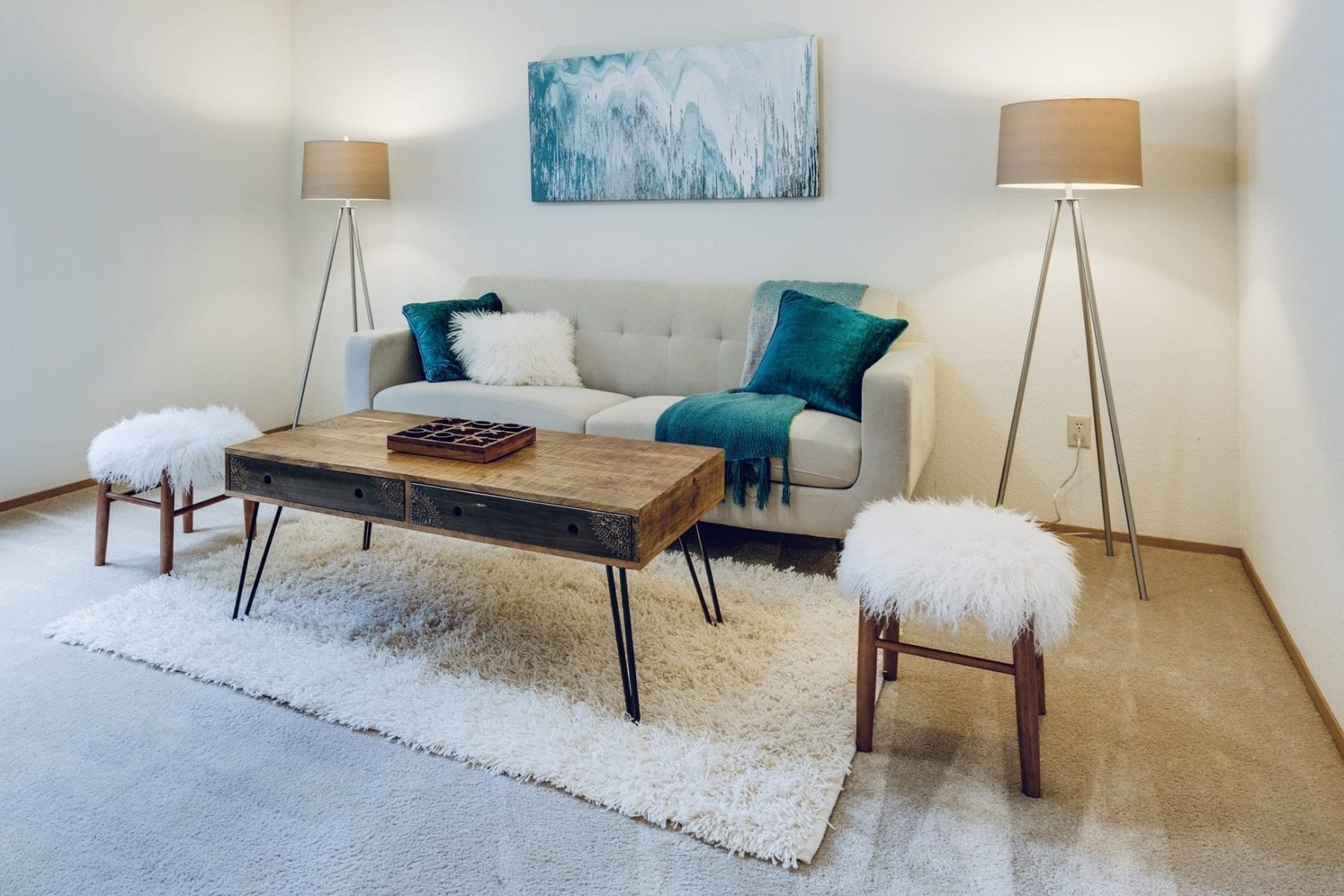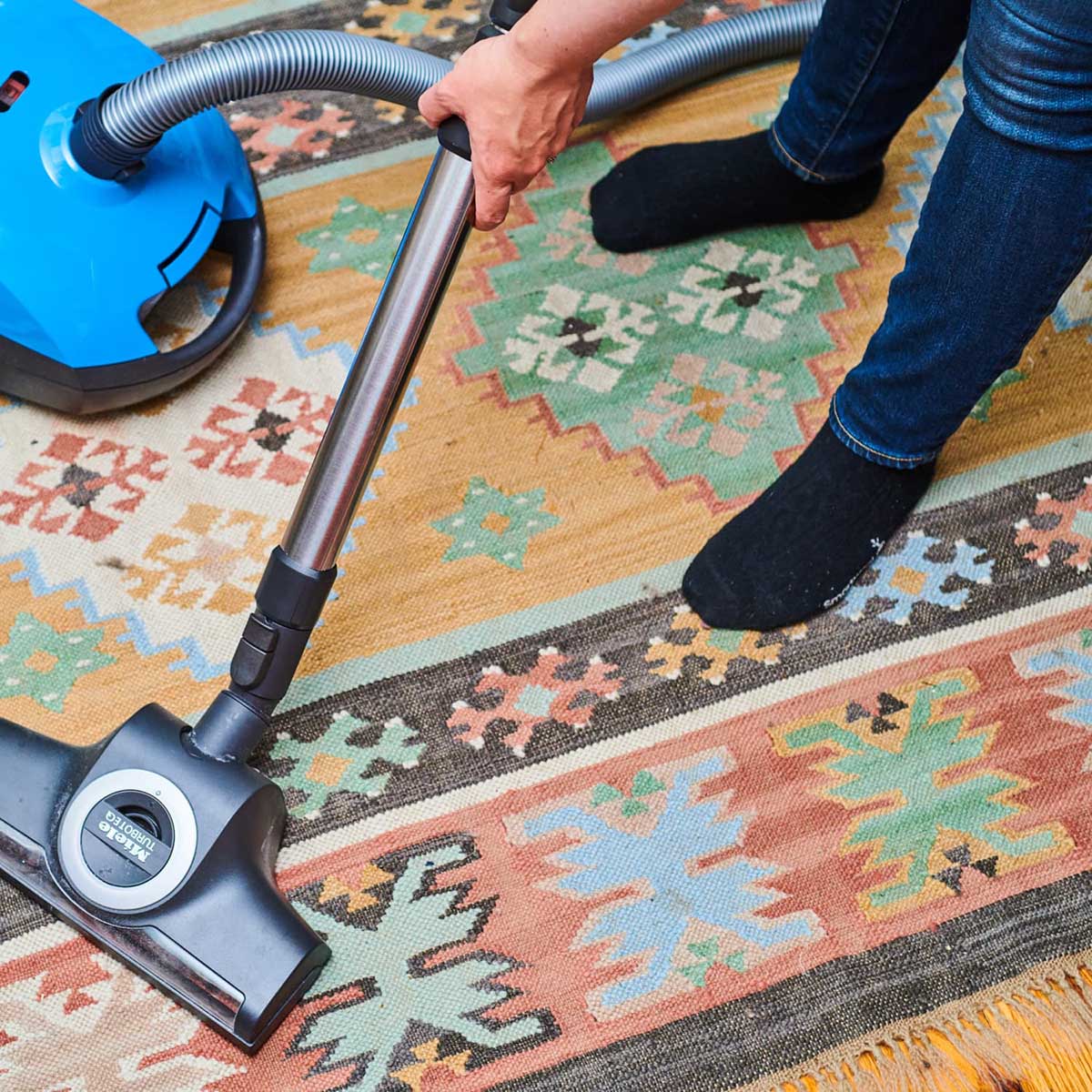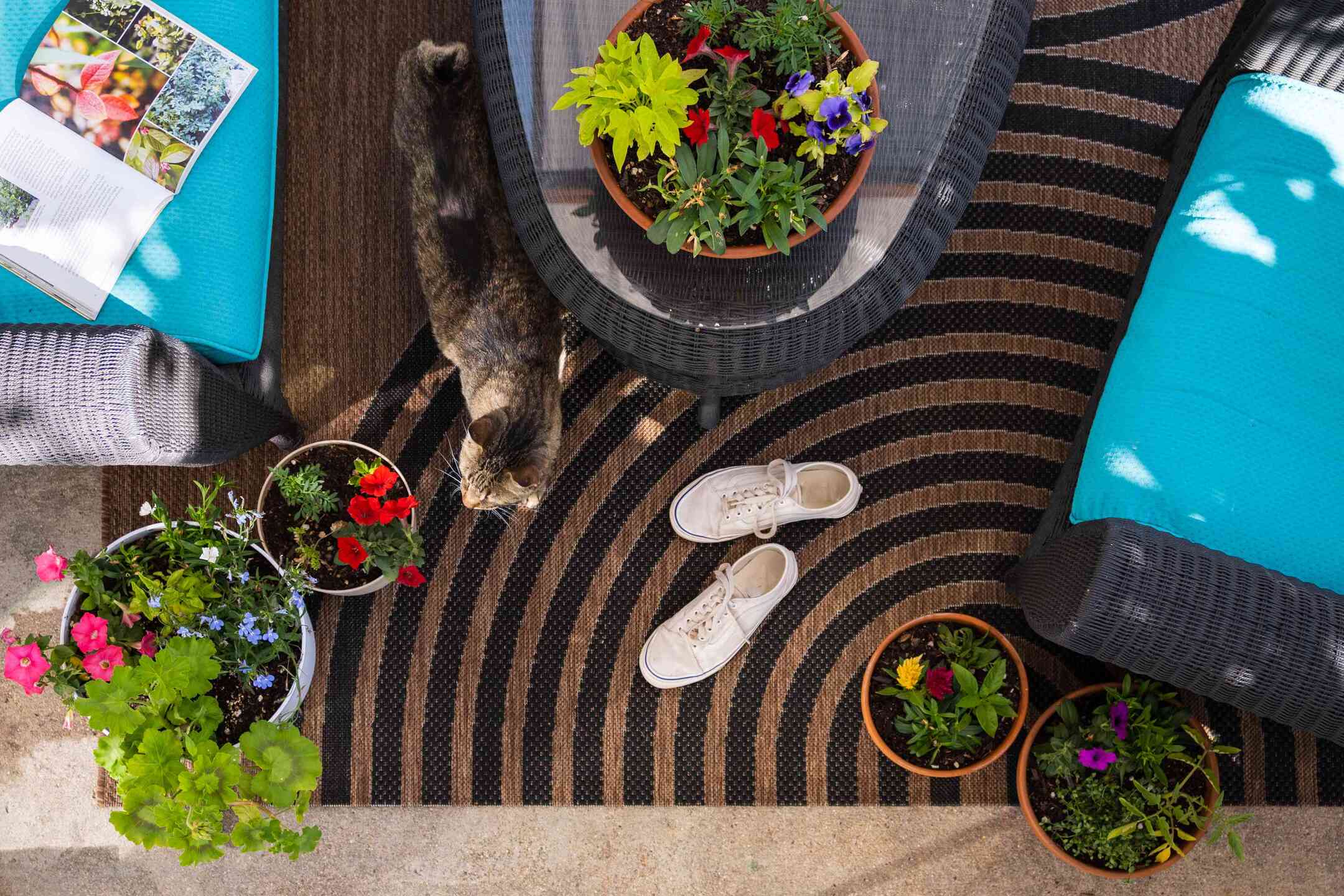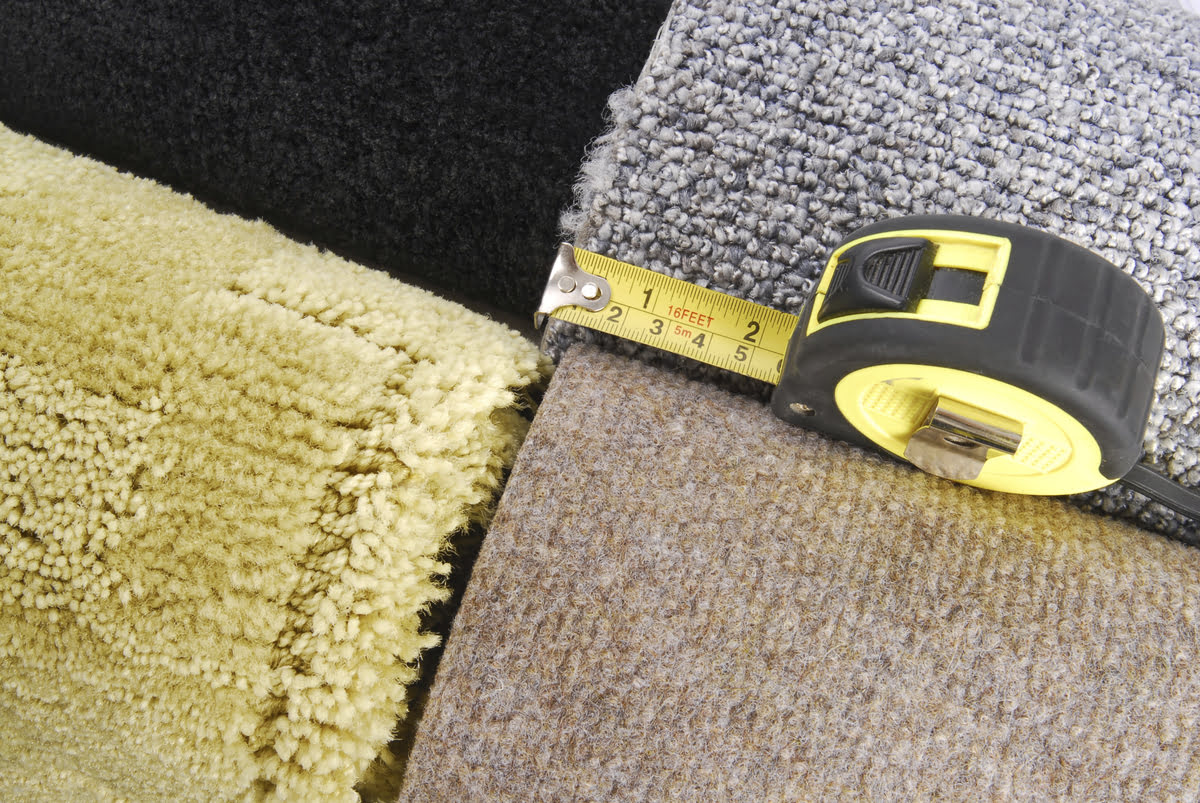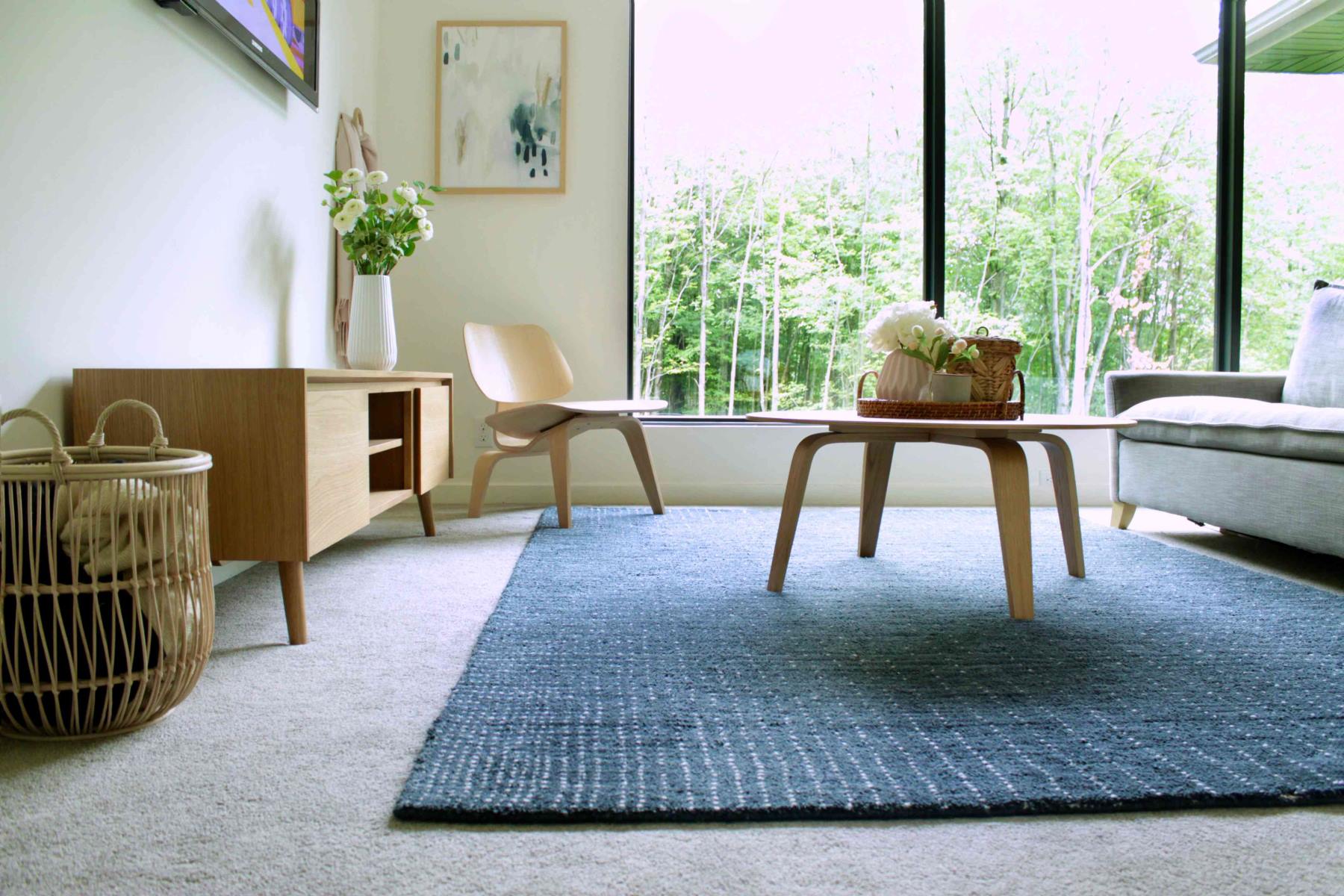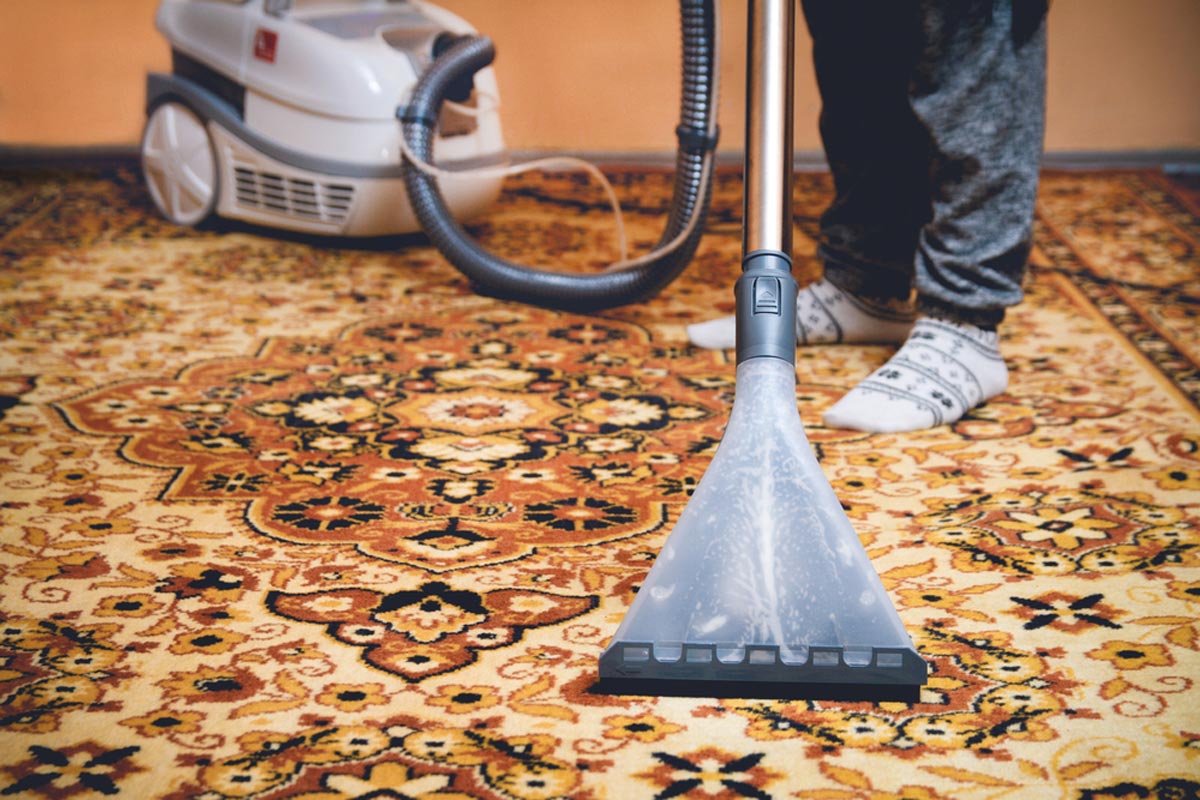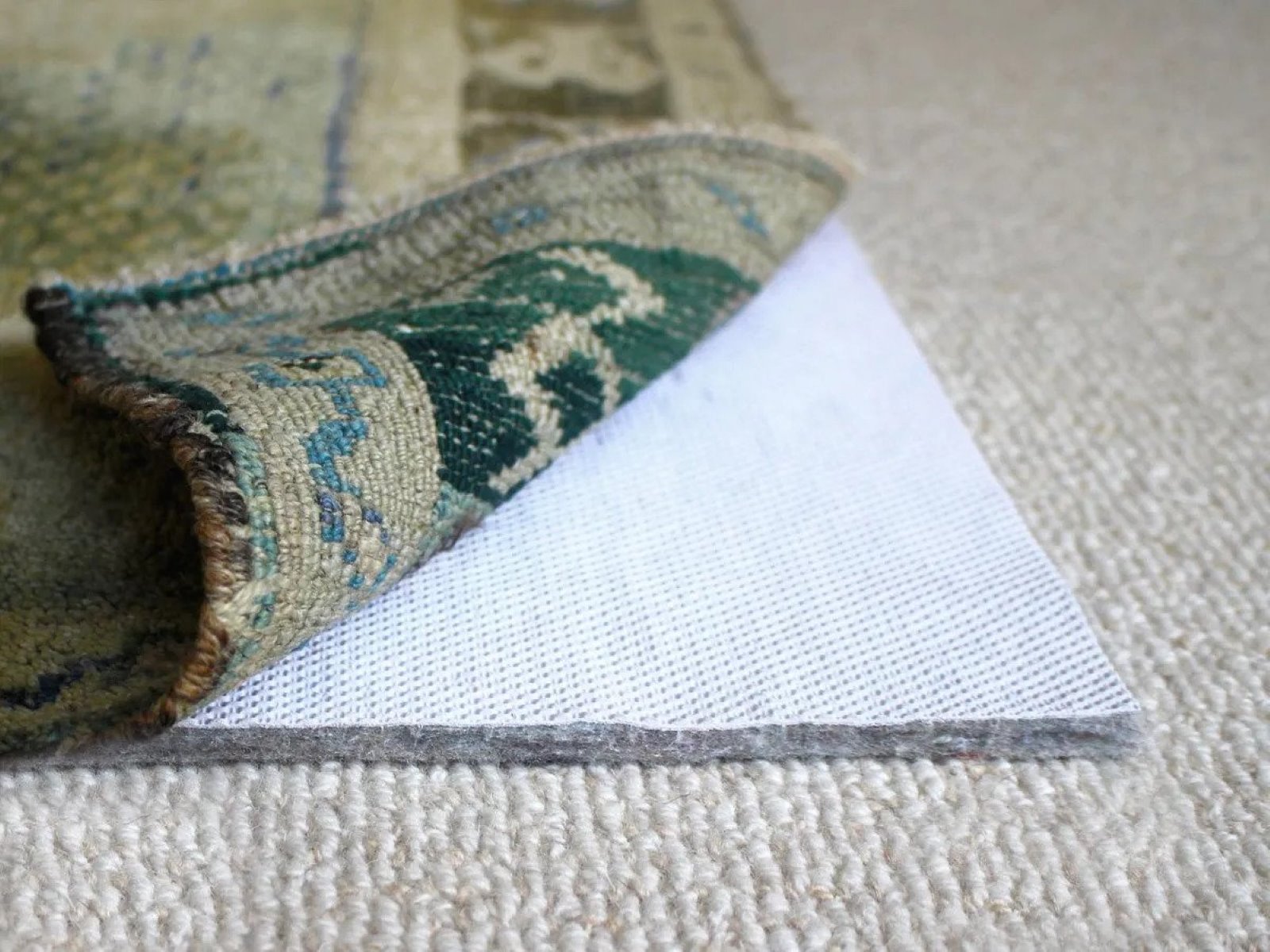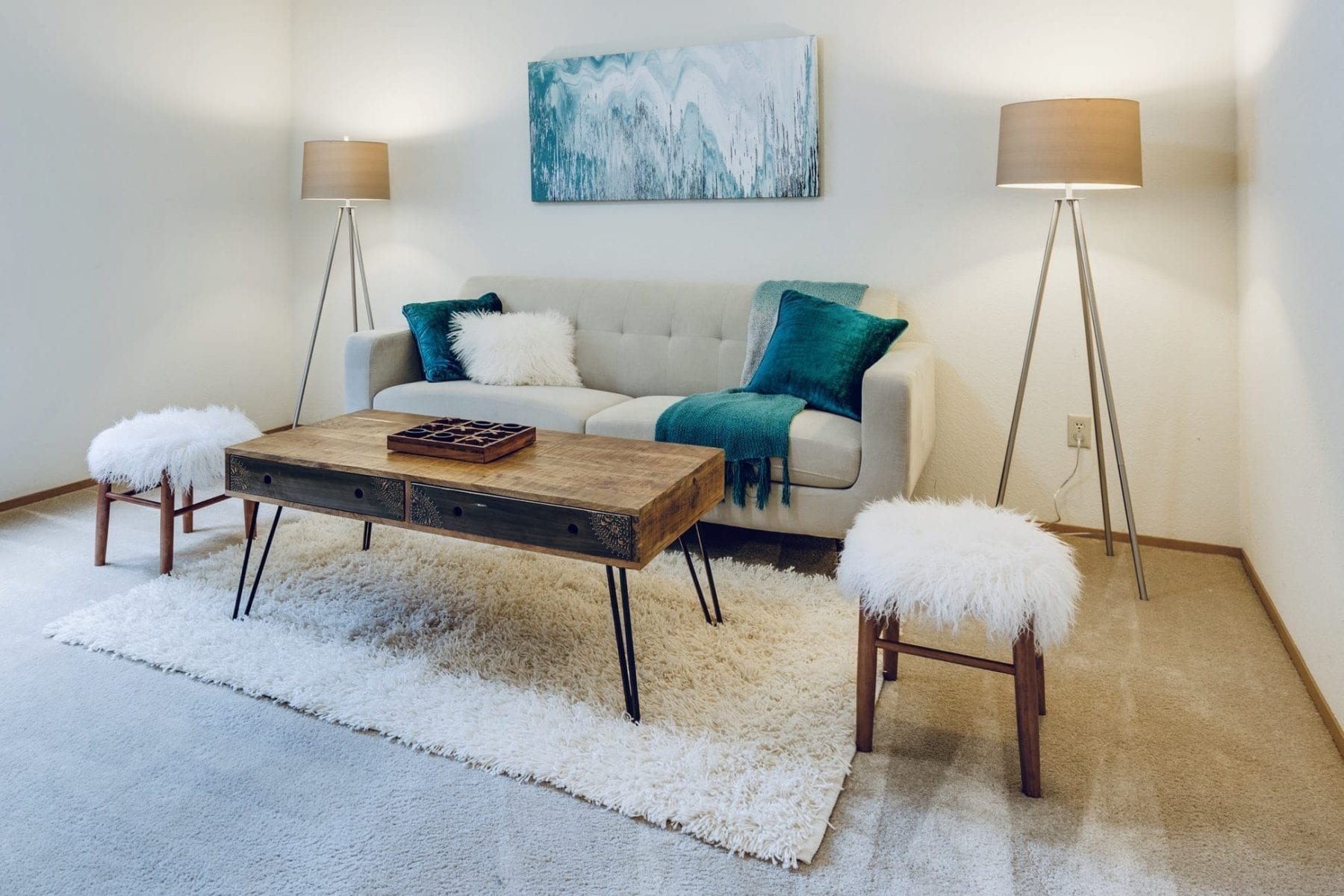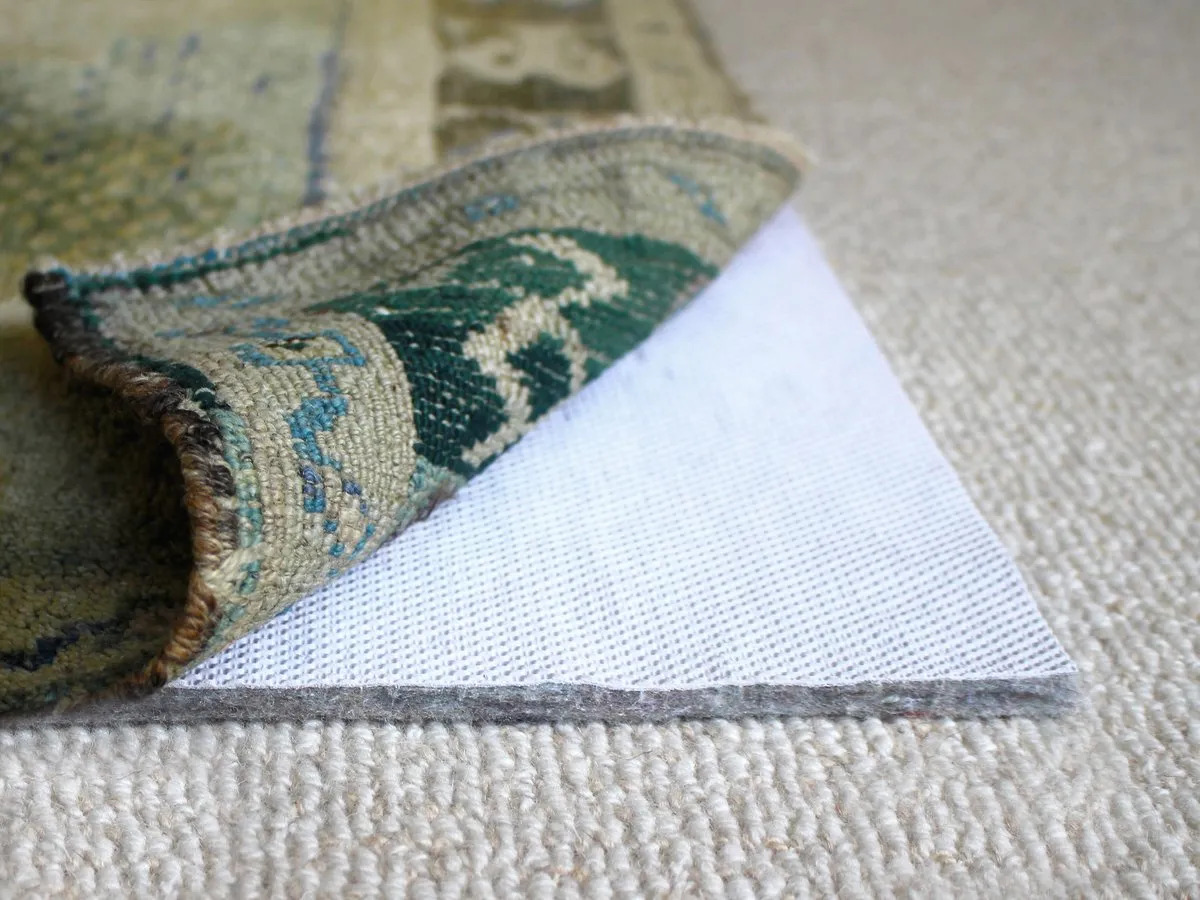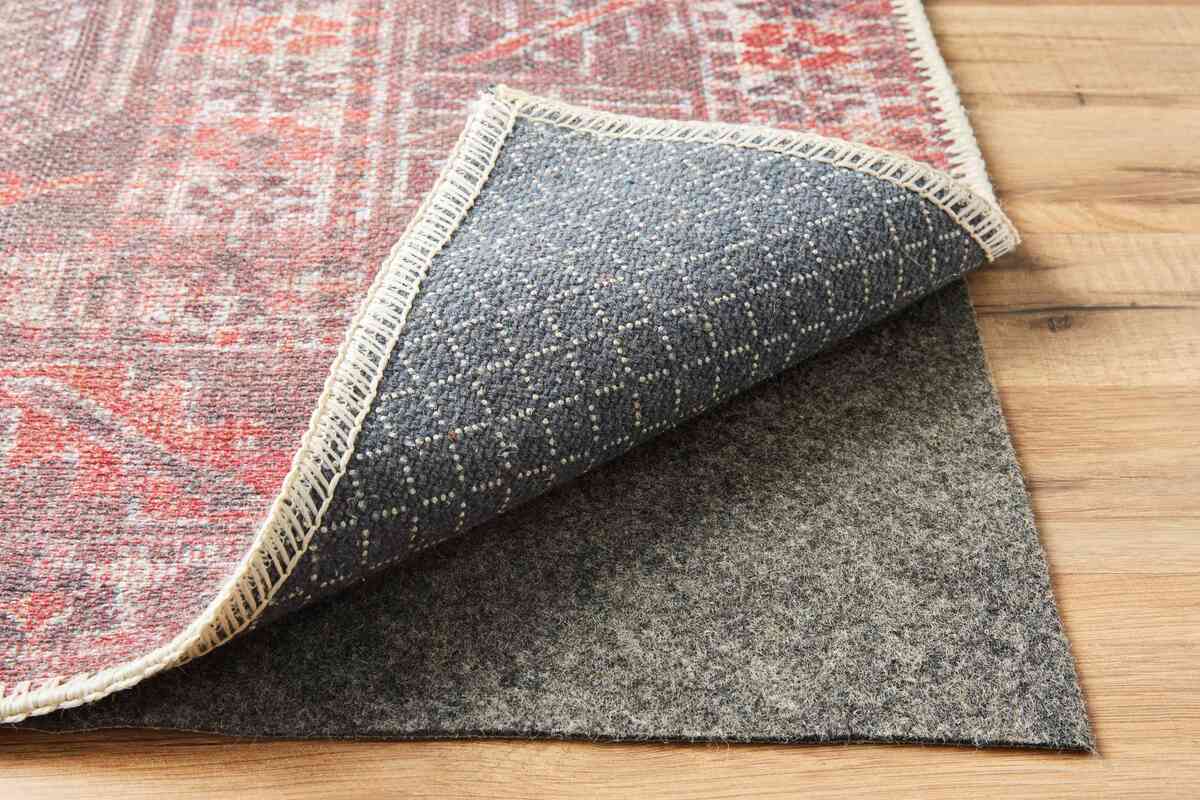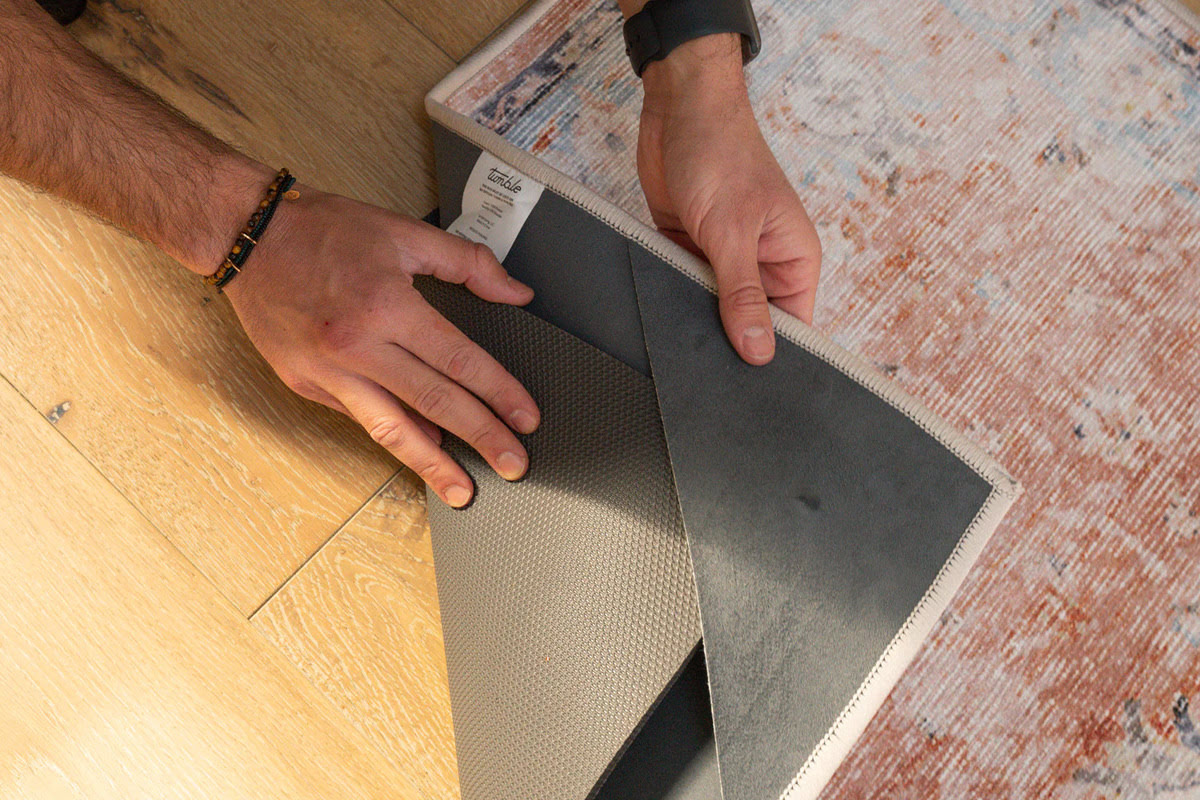

Articles
How To Get A Rug To Lay Flat On Carpet
Modified: January 5, 2024
Learn the best techniques and tips for getting a rug to lay flat on carpet with our informative articles. Improve the look and feel of your home today!
(Many of the links in this article redirect to a specific reviewed product. Your purchase of these products through affiliate links helps to generate commission for Storables.com, at no extra cost. Learn more)
Introduction
Having a rug on top of carpet can add texture, warmth, and personality to a room. However, one common issue that many people face is getting the rug to lay flat on the carpet. It can be frustrating to constantly have to adjust and straighten a rug that keeps wrinkling or curling up at the edges.
In this article, we will explore various methods and techniques to help you get your rug to lay flat on carpet. Whether you have a small area rug or a larger carpet, these tips and tricks will help you overcome this common problem and ensure that your rug stays in place and looks great.
We will start by understanding the nature of the problem and evaluating the type of carpet you have. Then, we will move on to preparing the rug before trying different methods like using double-sided tape, anti-slip pads, and rug gripper pads. We will also explore the option of weighing down the rug’s edges and applying gentle heat to help it flatten out. Lastly, we will discuss when it might be best to seek professional help.
So, if you’re tired of constantly adjusting your rug, keep reading and discover the solutions that will help you achieve a smooth, flat rug on your carpet.
Key Takeaways:
- Using methods like double-sided tape, anti-slip pads, and rug gripper pads can provide the necessary grip and stability to keep your rug in place on the carpet, ensuring a smooth and secure placement.
- If all else fails, seeking professional help from rug cleaners and repair technicians can provide expert assessment, specialized techniques, and deep cleaning to effectively address stubborn rug-laying issues.
Read more: How To Get New Rugs To Lay Flat
Understanding the Problem
Before we delve into the solutions, it’s important to understand why rugs tend to not lay flat on carpet. There are a few factors that contribute to this issue.
Firstly, the texture and thickness of the carpet can affect how well a rug lays flat. If the carpet has a deep pile or a thick padding, it can create unevenness under the rug, causing it to buckle or bunch up in certain areas.
Secondly, the size of the rug in relation to the carpet can also play a role. If the rug is smaller than the carpet, it can easily shift and move around, leading to wrinkles or edges rolling up.
Lastly, the material of the rug itself can impact its ability to lay flat. Natural fibers like wool or jute are more likely to possess a natural tendency to curl or buckle, while synthetic materials may have a more rigid structure.
By understanding these factors, you can better assess the situation and determine the best approach to get your rug to lay flat on the carpet.
Evaluating the Carpet
Before moving forward with any solutions, it’s crucial to evaluate the type of carpet you have. This will help you determine which method or combination of methods will be most effective in getting your rug to lay flat.
Start by examining the texture and thickness of the carpet. If it has a deep pile or a thick padding, you may need to consider additional measures to provide a more stable surface for your rug.
Next, assess the condition of the carpet. Is it worn out or damaged in any areas? Any bumps or unevenness in the carpet can make it challenging for a rug to lay flat. If there are any major imperfections, you may want to consider repairing or replacing the carpet before addressing the rug-laying issue.
Take note of any high-traffic areas where the carpet tends to get compressed or stretched. These areas can cause the rug to lift or wrinkle over time. Consider using extra measures to secure the rug in these specific spots.
It’s also important to consider the shape and size of the area where the rug is placed. If the room has irregular corners or unique architectural features, it may require more attention to ensure the rug lays flat in those areas.
By closely evaluating the carpet, you can get a better understanding of the challenges you may face and tailor your approach to getting the rug to lay flat accordingly. Keep these factors in mind as we explore the different methods to address the issue.
Preparing the Rug
Before implementing any specific methods to get your rug to lay flat on carpet, it’s important to properly prepare the rug. Taking these steps can increase the effectiveness of the solutions and help ensure a flat and secure placement.
First, thoroughly clean the rug to remove any dirt, dust, or debris. Vacuum both sides of the rug to eliminate any particles that could interfere with the rug’s ability to lay flat or grip the carpet properly.
Next, if the rug has creases or wrinkles, consider using a rug stretcher or laying it out flat in a warm and sunny area for a few hours. The heat and sunshine can help relax the fibers and remove any folds or wrinkles, making it easier for the rug to lay flat.
If your rug still has stubborn wrinkles or curls, you can try gently stretching it by hand. Starting from the center and working your way towards the edges, use your hands to pull and smooth out any creases or curls. Be careful not to pull too forcefully, as this can damage the rug.
It’s also a good idea to measure and align the rug properly on the carpet. Ensure that the rug is centered and evenly positioned before attempting any further methods. This will help provide a solid foundation for the rug to lay flat and minimize any potential misalignment issues.
By taking the time to properly prepare the rug, you can set the stage for successful implementation of the methods we will explore next. A clean and well-aligned rug will have a higher chance of laying flat and staying in place on the carpet.
Using Double-Sided Tape
One effective method to get a rug to lay flat on carpet is by using double-sided carpet tape. This adhesive tape is specifically designed to provide a strong grip between the rug and the carpet surface, preventing it from slipping or curling up.
To use double-sided tape, follow these steps:
- Cut the tape into strips or lengths that will fit along the edges of the rug. Make sure to use enough tape to cover the entire perimeter.
- Flip the rug over and carefully position the tape along the edges. Ensure that the tape remains hidden and does not extend beyond the edges of the rug.
- Press the tape firmly onto the back of the rug, ensuring good adhesion.
- Remove the protective backing from the tape, exposing the adhesive side.
- Place the rug back onto the carpet, aligning it properly. Start from one side and press down firmly along the taped edges, smoothing out any wrinkles or bumps as you go.
The double-sided tape creates a secure bond between the rug and the carpet, preventing it from shifting or curling up. It’s important to note that this method is more suitable for larger rugs or rugs that are not frequently moved, as removing the tape from the carpet can be challenging and may leave residue behind.
If you need to reposition or remove the rug in the future, gently lift the edges and peel off the tape, taking care not to damage the carpet fibers.
Using double-sided tape is a convenient and effective way to keep your rug in place and ensure it lays flat on the carpet. It provides a strong grip and minimizes the need for constant adjustments or repositioning.
Read more: How To Get Outdoor Rug To Lay Flat
Using Anti-Slip Pads
Another method to help your rug lay flat on carpet is by using anti-slip pads. These pads, also known as rug grippers or non-slip pads, provide traction between the rug and the carpet surface, preventing it from sliding or moving out of place.
Here’s how you can use anti-slip pads:
- Measure the dimensions of your rug and cut the anti-slip pad to match the size of the rug. It should be slightly smaller than the rug to ensure it remains hidden underneath.
- Flip the rug over and place the anti-slip pad in the desired position, making sure it is centered and covers the area where the rug tends to lift or shift.
- Press the anti-slip pad onto the back of the rug, ensuring it adheres firmly.
- Flip the rug back over and place it onto the carpet, aligning it properly.
- Press down on the rug, focusing on the areas with the anti-slip pads, to create a secure grip between the rug and the carpet.
Anti-slip pads create an additional layer of friction, preventing the rug from sliding or bunching up. They are particularly useful for rugs placed in high-traffic areas or for rugs with a smaller size that tend to move more easily.
One advantage of using anti-slip pads is that they are easy to remove and reposition. If you need to adjust the placement of the rug or clean the area underneath, simply lift the rug and reposition the anti-slip pads as needed.
Overall, using anti-slip pads is an effective and versatile solution to keep your rug in place on the carpet. It adds stability and ensures a flat and secure surface, reducing the need for constant readjustments.
Place a non-slip rug pad under the rug to provide traction and prevent it from shifting. This will help the rug lay flat and stay in place on the carpet.
Using Rug Gripper Pads
If you’re looking for a more heavy-duty solution to keep your rug flat on carpet, using rug gripper pads may be the answer. Rug gripper pads are specifically designed to provide maximum grip and prevent any movement or slipping of the rug on the carpet.
Here’s how you can use rug gripper pads:
- Measure the size of your rug and cut the rug gripper pad to match its dimensions. It should be slightly smaller than the rug to ensure it remains hidden underneath.
- Place the rug gripper pad flat on the carpet in the desired position where the rug will be placed.
- Carefully place the rug on top of the gripper pad, ensuring that it aligns properly and covers the entire gripper pad area.
- Press down firmly on the rug, paying extra attention to the edges, to secure it in place.
Rug gripper pads are typically made of a non-slip rubber material with a textured surface that creates a strong grip between the rug and the carpet. They are particularly effective for larger rugs or heavier rugs that are more prone to shifting or sliding.
One advantage of using rug gripper pads is their durability and longevity. They are designed to withstand heavy foot traffic and maintain their grip over time, minimizing the need for frequent adjustments.
When it comes time to clean or reposition the rug, simply lift the edges and rearrange the rug gripper pads as needed. The pads can easily be cleaned as well, ensuring their effectiveness is maintained.
Using rug gripper pads provides a reliable and long-lasting solution to keep your rug flat on the carpet. They offer maximum grip and stability, giving you peace of mind that your rug will stay in place even in high-traffic areas.
Weighing Down the Edges
If your rug is constantly lifting or curling up at the edges, weighing them down can be a simple yet effective solution to get it to lay flat on the carpet. This method helps to provide added stability and keeps the rug in place.
Here’s how you can weigh down the edges of your rug:
- Locate the areas where the edges of the rug tend to lift or curl up.
- Choose heavy objects that can be safely placed on the edges of the rug without causing damage. Examples include decorative items, books, or weights specifically designed for rugs.
- Carefully place the chosen objects along the edges of the rug, distributing the weight evenly.
- Adjust the placement of the objects as needed to ensure they are effectively weighing down the edges of the rug.
The added weight on the edges of the rug helps to counteract any tendency for the rug to lift or curl. This method is particularly useful for rugs that are lighter in weight or have a more flexible construction.
It’s important to note that you should choose objects that won’t damage the rug or the carpet underneath. Be cautious when placing heavy items on delicate rugs to prevent any tears or creases.
Additionally, this method may not be suitable for rugs that are frequently moved or in areas where heavy objects could be a tripping hazard. Consider the practicality and safety factors before deciding to weigh down the edges of your rug.
Weighing down the edges of your rug can be a temporary solution or used in conjunction with other methods to achieve the desired result of a flat and secure rug on the carpet.
Applying Heat
If your rug is stubbornly refusing to lay flat on the carpet, applying heat can be a helpful technique to relax the fibers and remove any stubborn wrinkles or curls. Heat helps the rug reshape and flatten, making it easier to lay flat on the carpet.
Here’s how you can apply heat to your rug:
- Thoroughly clean the rug to remove any dirt or debris that could be trapped in the fibers.
- Set your iron to a low or medium heat setting, ensuring that it does not produce steam.
- Place a thin, damp cloth over the wrinkled or curled area of the rug.
- Gently press the iron on top of the damp cloth, moving it in a smooth motion without lingering in one spot.
- Continue pressing and moving the iron over the cloth for a few seconds at a time, being careful not to apply too much heat that could damage the rug.
- Remove the iron and cloth and check the rug’s condition. If there are still visible wrinkles or curls, repeat the process until the desired results are achieved.
It’s important to exercise caution when applying heat to rugs, especially if they are made of natural fibers like wool or jute, as they can be more delicate. Always check the specific care instructions for your rug and test the heat application on an inconspicuous area before proceeding.
Remember to keep the iron in constant motion to prevent scorching or burning the rug. If you’re unsure or uncomfortable using an iron, you can also try using a blow dryer set on a low heat setting to gently heat and reshape the rug.
Applying heat helps relax the rug fibers, allowing them to lay flat more easily. However, keep in mind that this method may not be suitable for all types of rugs, especially those with synthetic materials that can melt or distort under heat. Exercise caution and use your judgment when applying heat to your rug.
Seeking Professional Help
If you’ve tried various methods and your rug still refuses to lay flat on the carpet, it may be time to seek professional help. Professional rug cleaners and technicians have the expertise and specialized equipment to address stubborn rug-laying issues effectively.
Here are a few reasons why seeking professional help can be beneficial:
- Expert Assessment: Professionals can examine the rug and the carpet to identify any underlying issues that may be causing the problem. They can evaluate the condition of the rug and determine the best course of action to get it to lay flat.
- Specialized Techniques: Professional rug cleaners often have access to specific techniques and tools that are not readily available to homeowners. They can use methods such as steam cleaning or stretching to help relax the fibers and reshape the rug.
- Deep Cleaning: Over time, dirt, dust, and debris can accumulate in the fibers of the rug, affecting its ability to lay flat. Professional cleaning can help remove these contaminants and rejuvenate the rug, potentially improving its layability.
- Repair and Restoration: If your rug has any tears, frayed edges, or damaged areas contributing to the rug-laying issue, professionals can provide expert repair and restoration services. They have the knowledge and skills to address these problems and bring your rug back to its original condition.
When seeking professional help, do your research and choose a reputable rug cleaning and repair service with experience in handling rugs on carpets. Take the time to read reviews and testimonials to ensure you’re selecting a reliable company.
Professional assistance can be particularly beneficial for valuable or antique rugs that require delicate handling and specialized care. It’s important to remember that the expertise and techniques employed by professionals can significantly increase the chances of achieving a flat and well-aligned rug on the carpet.
If you’ve exhausted your options and the rug-laying issue persists, don’t hesitate to reach out to professionals who can provide the expertise and solutions you need to resolve the problem effectively.
Conclusion
Getting a rug to lay flat on carpet can be a frustrating challenge, but with the right methods and techniques, it is certainly achievable. By addressing the underlying causes and implementing the appropriate solutions, you can ensure a smooth and secure placement for your rug.
We’ve explored various strategies that can help you overcome this issue. Understanding the problem and evaluating the carpet allows you to tailor your approach to the specific circumstances. Preparing the rug by cleaning it, removing wrinkles, and aligning it properly sets the foundation for success.
Using methods like double-sided tape, anti-slip pads, and rug gripper pads provide the necessary grip and stability to keep your rug in place on the carpet. Weighing down the edges and applying heat can also help reshape the rug and encourage it to lay flat.
If all else fails, seeking professional help from rug cleaners and repair technicians can provide expert assessment, specialized techniques, and deep cleaning to address the rug-laying issue effectively. They can also repair any damages that may be contributing to the problem.
In conclusion, achieving a flat and well-aligned rug on carpet requires a combination of patience, experimentation, and the appropriate techniques. By implementing the methods discussed in this article and considering professional help when needed, you can enjoy a beautiful and hassle-free rug placement in your home.
Remember, each rug and carpet combination may require a slightly different approach, so be open to trying different methods until you find the one that works best for your specific situation. With persistence and the right techniques, you’ll be able to enjoy a perfectly laid rug that adds warmth and style to your space.
Frequently Asked Questions about How To Get A Rug To Lay Flat On Carpet
Was this page helpful?
At Storables.com, we guarantee accurate and reliable information. Our content, validated by Expert Board Contributors, is crafted following stringent Editorial Policies. We're committed to providing you with well-researched, expert-backed insights for all your informational needs.
